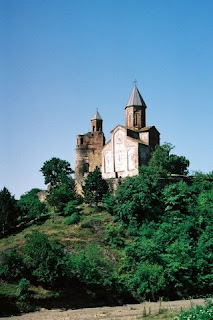An attempt at fried eggs with an aluminum frying pan and no spatula was a minor disaster. John was able to salvage something by eating from the pan. We’re gradually adding to our list of must-have acquisitions (lamps, frying pan, and spatula). We did manage to toast some bread on the hot plate.
Today was a walking day- so we set off on foot for the Old City. Our apartment is quite a way away, but it gave us a chance to see the sites around us- on a day where there are virtually no cars on the roads except for the Palestinians. We wandered through the Muslim quarter (found a frying pan and spatula) and saw the major sites. Another falafel sandwich. We found a Palestinian taxi driver to take us back (our feet were falling off) and may have made a contact for a Palestinian guide to take us into some of the “no-drive” zones.
Back at the apartment, it was a choice of toasted cheese sandwiches or take-out Chinese so we opted for take-out. It was the worst Chinese food we’ve ever had. The sesame chicken was like dried shoe leather with no sauce (“Chicken Negev”). When we called the restaurant to complain, they explained that sesame chicken doesn’t have sauce- and that this is not “American” sesame chicken. We retorted- is it “Jewish Sesame Chicken”… One less take-out option for our stay here.

















































